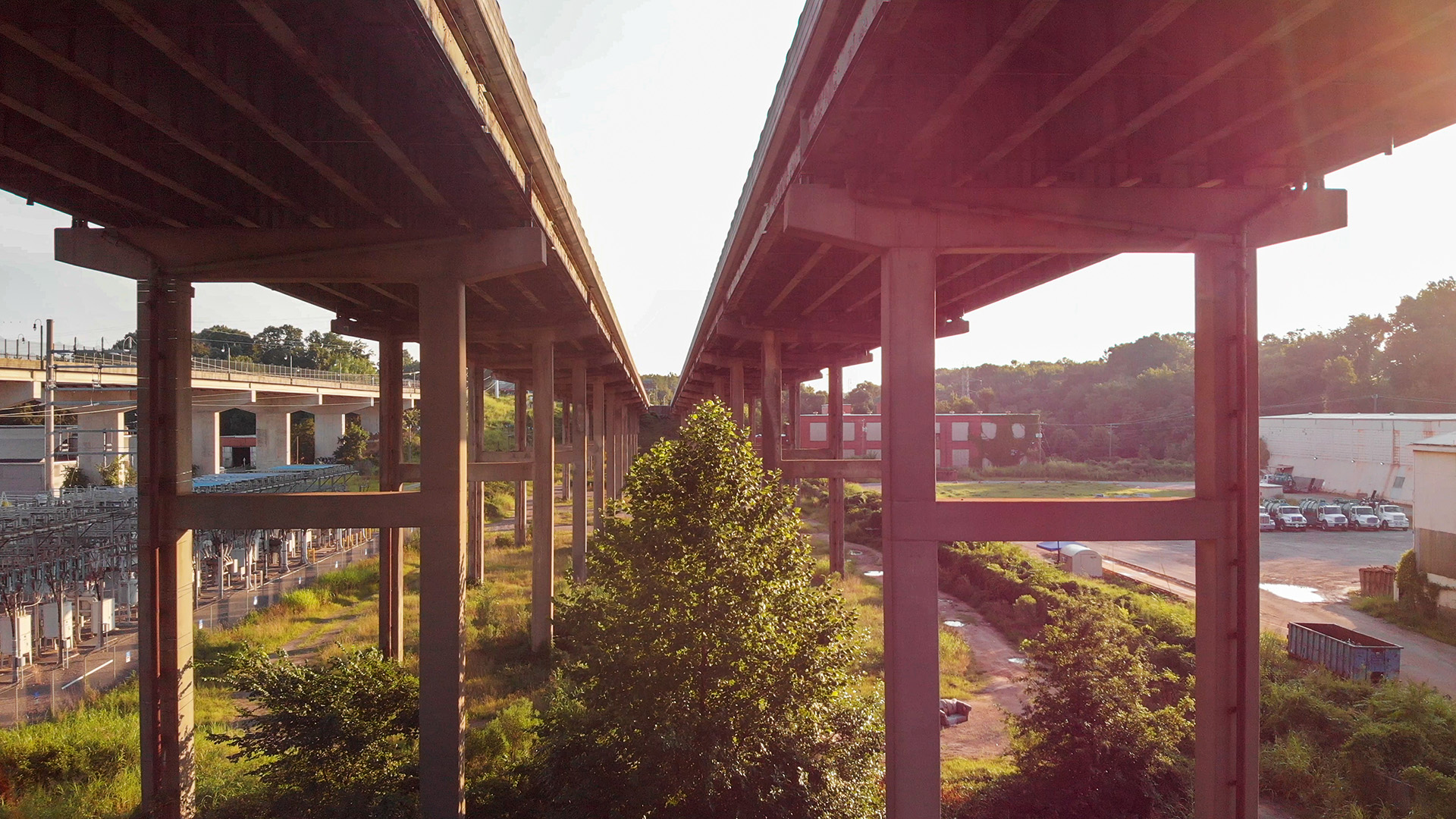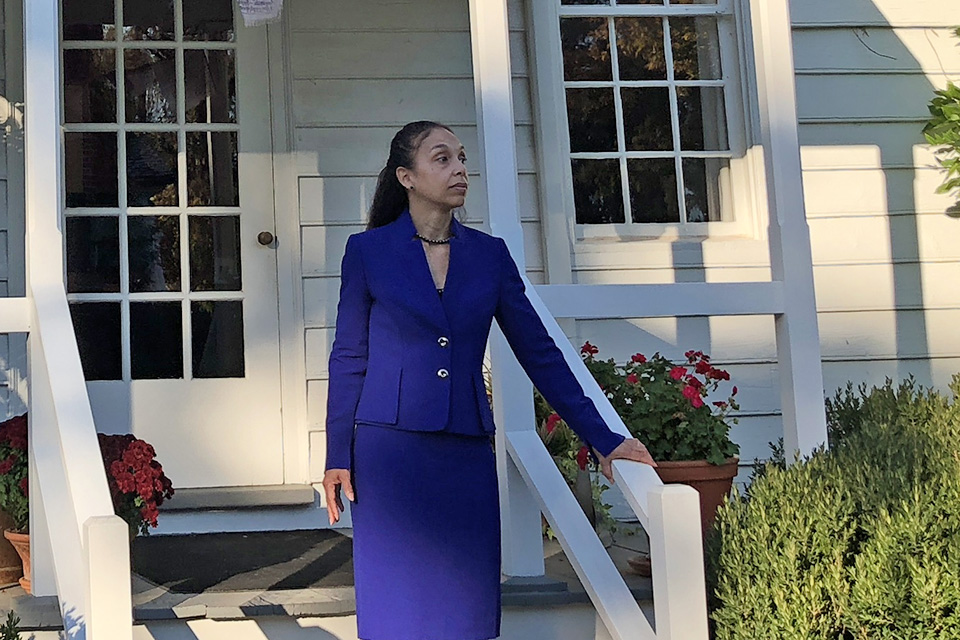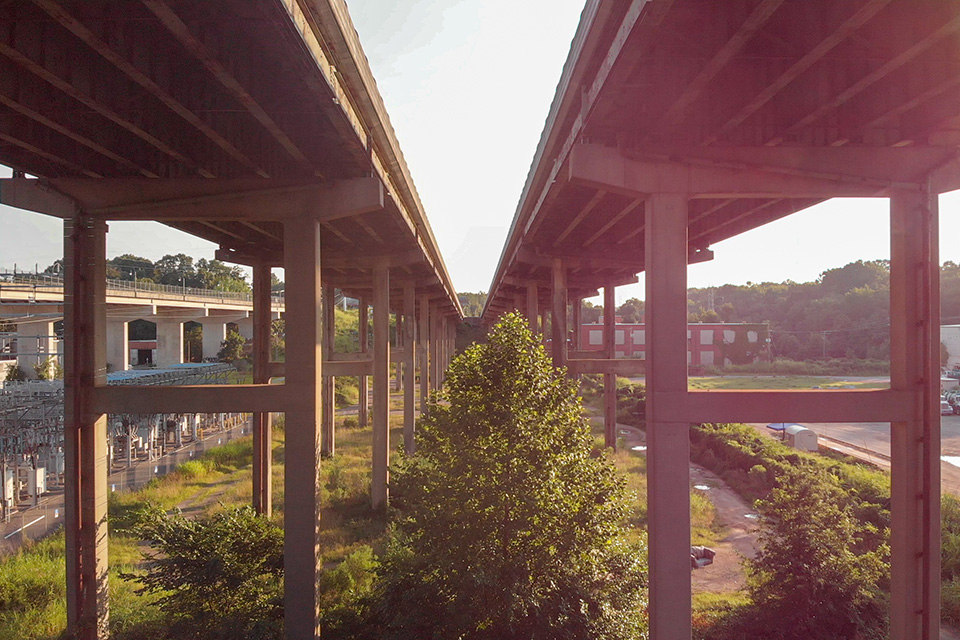A Richmond burial ground designated as “one acre for the free people of colour, and one for the slaves in the city,” Shockoe Hill African Burying Ground opened in 1816 and operated until 1879. Following its closure, the burial ground was desecrated by a series of municipal building projects over the nineteenth and twentieth centuries, and now faces renewed threats from proposed infrastructure projects. Advocacy led by a descendant of individuals buried at Shockoe Hill has generated public support for protections against future proposed infrastructure projects.
History
The City of Richmond’s first designated burial ground for enslaved and free Black people was established as early as 1799, when the city purchased 1.5 acres on Shockoe Hill’s eastern slope. This poor quality low-lying, creek-side tract in Shockoe Bottom, historically known as Shockoe Valley, sits north of the modern intersection of 15th and Broad Streets with Interstate 95, according to architectural historian Gibson Worsham and Dr. Ryan K. Smith of Virginia Commonwealth University. Records from 1806 show that the site also housed the city’s public gallows and the municipal powder magazine stood nearby. Richmond’s Black community vehemently protested the inferior conditions of this burial ground, calling it “a mock of a grave yard.” Beginning in 1810, Christopher McPherson began petitioning the city to dedicate land on the city’s north side for a new burial ground for free Black residents. In 1815, a group of free people of color raised funds to establish a private burial ground on Academy Hill as an alternative to the Burial Ground for Negroes in Shockoe Bottom. In the same year, the city passed an ordinance establishing a new public burial ground. In 1816, it opened at the corner of Fifth and Marshall Streets, east of what would soon become Hebrew Cemetery, and was divided as ‘one acre for the free people of colour, and one for the slaves in the City.”
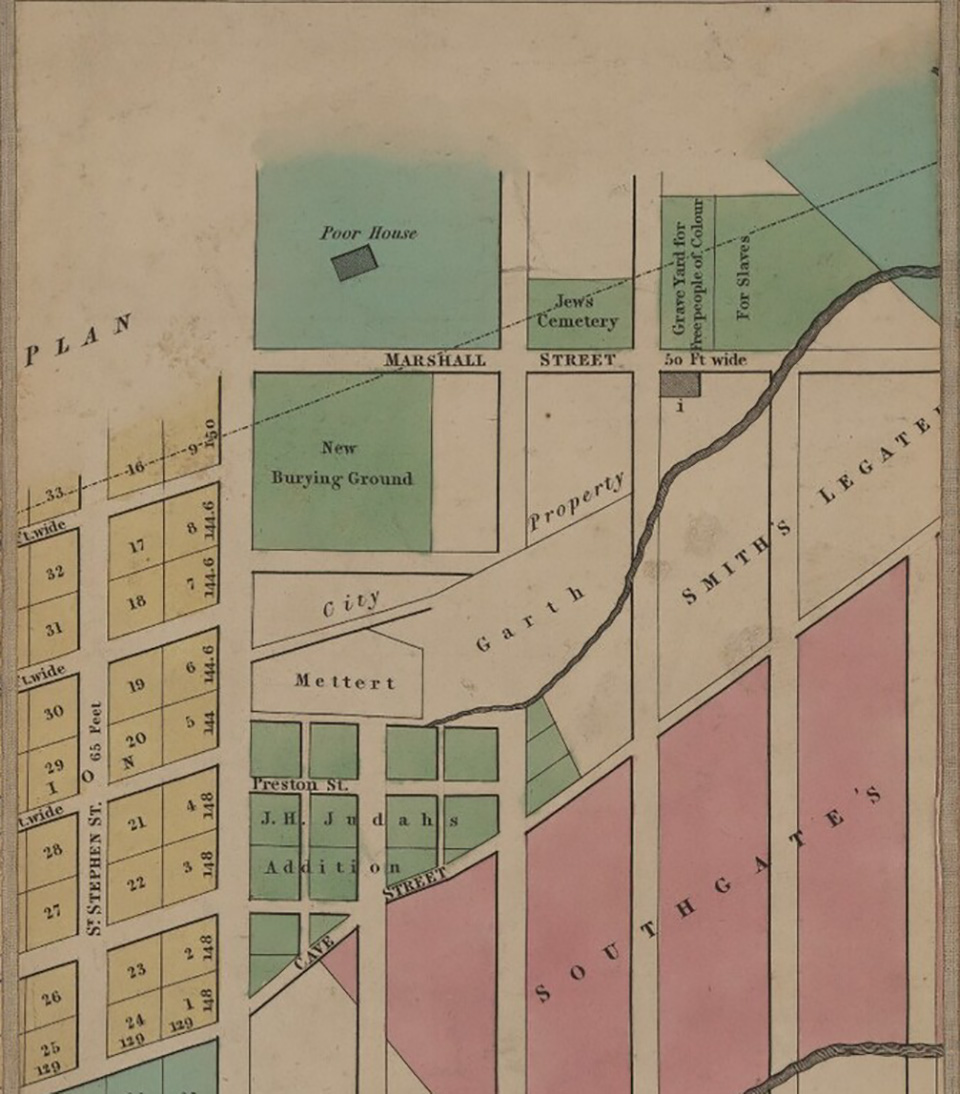 Plan of the city of Richmond drawn from survey and regional plans by Bates, 1835. Photo courtesy University of Virginia Library.
Plan of the city of Richmond drawn from survey and regional plans by Bates, 1835. Photo courtesy University of Virginia Library.
The new burial ground lacked a formal designation, with mid-nineteenth century maps referring to it variously as “Grave Yard for Free People of Color and For Slaves,” or “Burying-ground for Coloured persons and Burying-ground for Slaves.” By 1840, with the city’s Black population rising to nearly 10,000, the city counted 34 adults and sixteen minors interred in a single month. In 1835, the portion of the burial ground designated for enslaved people was doubled in size, and by 1850, the burial ground was expanded by nine additional acres. It continued to expand and was in continuous use for many years, though after Nat Turner’s rebellion of enslaved people in 1831, Richmond’s enslaved population was prohibited from conducting funeral services without a white person present. Nevertheless, Richmond’s free Black and enslaved community persevered to honor their dead. In 1853 landscape architect Frederick Law Olmsted, Sr., happened to witness a funeral at Shockoe Hill during his tour of the South. Moved by this display, Olmsted wrote that he followed “a negro funeral procession” of hearse and coaches to the burial ground, where he witnessed a group conducting a burial and singing. The graves were marked, he noted, with “two small branches hung with withered leaves.”
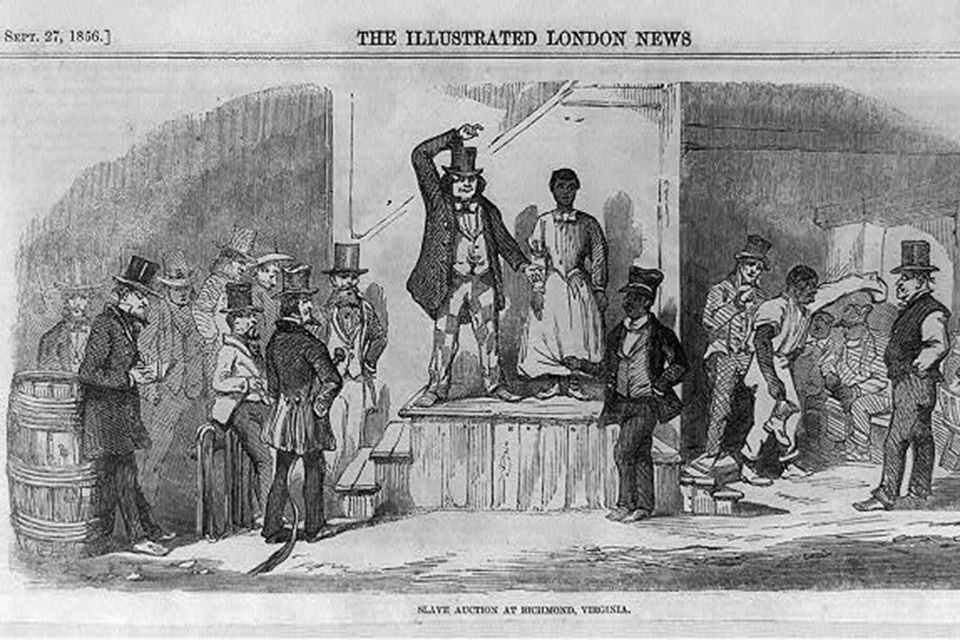 Richmond slave auction, 1856. Illustration by London Illustrated News. Photo courtesy Library of Congress.
Richmond slave auction, 1856. Illustration by London Illustrated News. Photo courtesy Library of Congress.
Recordings of some burials at Shockoe Hill African Burying Ground survive. Reports from 1859-1862 indicate that around 430 burials were occurring annually, with numbers doubling during the next two years of the Civil War, according to research by Dr. Smith. In 1865, on the eve of emancipation, Confederate troops exploded the nearby powder magazine, damaging many graves and rendering them unmarked. By the 1870s, the burial ground was referred to as “Potter’s Field,” a term of Biblical origins commonly used to refer to a burial ground for unknown, unclaimed, or indigent people. Shockoe Hill was plagued by graverobbers during this time, who kept a prosperous business disinterring bodies and selling them to medical schools and students. Black residents who could afford to do so chose to be buried at Barton Heights cemeteries.
At its peak, more than 22,000 people were interred there, likely making it the largest burying ground for free and enslaved people of color in the United States. In 1879 the city redirected interments to the segregated Oakwood Cemetery and closed the overcrowded Shockoe Hill African Burying Ground.
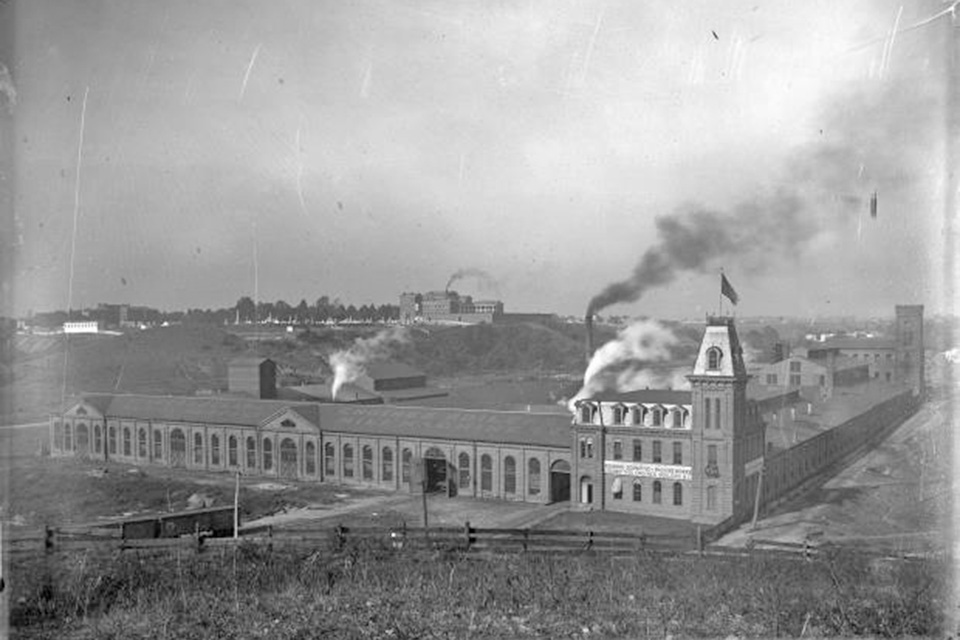 Richmond Locomotive and Machine Works, showing Shockoe Hill in distance, circa 1900. Photo courtesy Cook Collection, The Valentine.
Richmond Locomotive and Machine Works, showing Shockoe Hill in distance, circa 1900. Photo courtesy Cook Collection, The Valentine.
In 1882, the Hebrew Cemetery petitioned the city for a portion of the burial ground and succeeded in acquiring it from the city at a cost of $200. In 1883, the city pursued repurposing the site, extending Fifth Street through the grounds and desecrating the burial ground in the process. Disinterred bones and bodies were used as construction infill, with some materials left visibly exposed for months. This incited public outrage, including from the City Council, and the exposed remains were ordered to be reinterred. However, a later extension of Fifth Street in 1890, constructed to create a viaduct serving streetcar links, once again left human remains scattered at the construction site. In the same year, the city began extending nearby Seventh Street to the nearby Locomotive and Machine Works, precipitated further disturbance. In 1900, a railroad track was laid through the site of the burial ground.
 Former site of Sun Oil Co. gas station at Shockoe Hill African Burying Ground, 2020. Photo by Barrett Doherty.
Former site of Sun Oil Co. gas station at Shockoe Hill African Burying Ground, 2020. Photo by Barrett Doherty.
Further desecration occurred throughout the 20th century. The burial ground acreage was divided, with some areas of the north and south ends becoming a part of the Hebrew Cemetery, and other parcels sold into private hands. In the 1930s, the Fifth Street Viaduct was reconstructed in concrete and renamed “Stonewall Jackson Memorial Bridge” in honor of a Confederate general. In the 1950s, city authorities rezoned parcels for use as a city dog pound and sold a parcel to the Sun Oil Company, which eventually built a gas station atop the site in 1960. In 1968 Interstate 64, running from Virginia to Missouri, was completed. In Richmond, an Interstate 64 overpass was built across Shockoe Valley and through the burial ground. Of the original city designated burial grounds—comprising the Hebrew Cemetery, Shockoe Hill Cemetery, and the Shockoe Hill African Burying Ground—only the first two are presently listed in the National Register of Historic Places.

Threat
Threats to the integrity of this historically and culturally important landscape recommenced in 2013, when the Virginia Department of Transportation proposed widening Interstate 64 to the east. Test trenches demonstrated no remaining evidence of burials. These test trenches were dug only on a small section of the burial ground on the state-owned property beneath the Interstate 64 overpass, in the same area where a powder magazine had been constructed in the nineteenth century. During that earlier construction project, over one hundred skeletons were unearthed, moved, and reburied nearby. Another initiative, the DC to Richmond high-speed rail project, explored the possibility of adding railway lines across the burial ground. Investigators found in 2018 that the proposed railway construction site might still contain intact burials and formally recorded the site with the Virginia Department of Historic Resources as archaeological site 44He1203, also known as the “Grave Yard for Free People of Color and Slaves.” Despite these findings and campaigning by a descendant and other advocates, the Department of Historic Resources reviewed plans for both transportation initiatives and issued determinations that neither would have adverse effects on the site.
Concurrently, the gas station that sat atop Shockoe Hill was seized by the city in 2018 after the business neglected to pay back taxes. When the gas station was slated for public auction, a descendant with ties to the burial ground, Lenora McQueen of Texas, stepped forward with evidence tracing at least three of her family members to Shockoe Hill, which resulted in the auction’s halt. McQueen continued to research and gather support, co-authoring a Preliminary Information Form for the Shockoe Hill Burying Ground Historic District in 2020. The comprehensive report was unanimously approved by the state’s architectural review board as eligible for listing in the Virginia Landmarks Register and the National Register of Historic Places. In December 2020, following McQueen’s efforts, Richmond’s city council approved an ordinance providing for the city to purchase the service station property and slightly more than an acre of the original footprint of the burial ground. In June 2021, the Virginia Department of Historic Resources announced its approval for the placement of a highway historical marker near the original site of Shockoe Hill African Burying Ground at Fifth and Hospital streets.
What You Can Do to Help
Write to Governor Glenn Youngkin, Senators Mark Warner and Tim Kaine, and Representative Donald McEachin and demand urgent action to protect the site from development.
Office of the Virginia Governor
P.O. Box 1475, Richmond, VA 23218
Phone: (804) 786-2211
E: https://www.governor.virginia.gov/constituent-services/communicating-with-the-governors-office/
Senator Mark Warner
703 Hart Senate Office Building, Washington, DC 20510
Phone: (202) 224-2023
E: https://www.warner.senate.gov/public/index.cfm/contact
Senator Tim Kaine
231 Russell Senate Office Building, Washington, DC 20510
Phone: (202) 224-4024
E: https://www.kaine.senate.gov/contact/share-your-opinion
Contact the Virginia Department of Historic Resources and express support for a new Shockoe Hill Burying Ground Historic District including and protective of Shockoe Hill African Burying Ground.
c/o Julie Langan, Director
Virginia Department of Historic Resources
2801 Kensington Avenue, Richmond, VA 23221
Phone: (804) 482-6446
Contact the Virginia Department of Rail and Public Transportation and add your comments urging the city to perform due diligence in historical research and to respect the full boundaries of Shockoe Hill African Burial Ground as new rail and highway construction projects are planned. Join the VADRPT mailing list or submit an online comment form and encourage others to participate as well.
Virginia Department of Rail and Public Transportation
600 East Main Street, Suite 2102, Richmond, VA 23219
E: Dc2rva@drpt.virginia.gov

